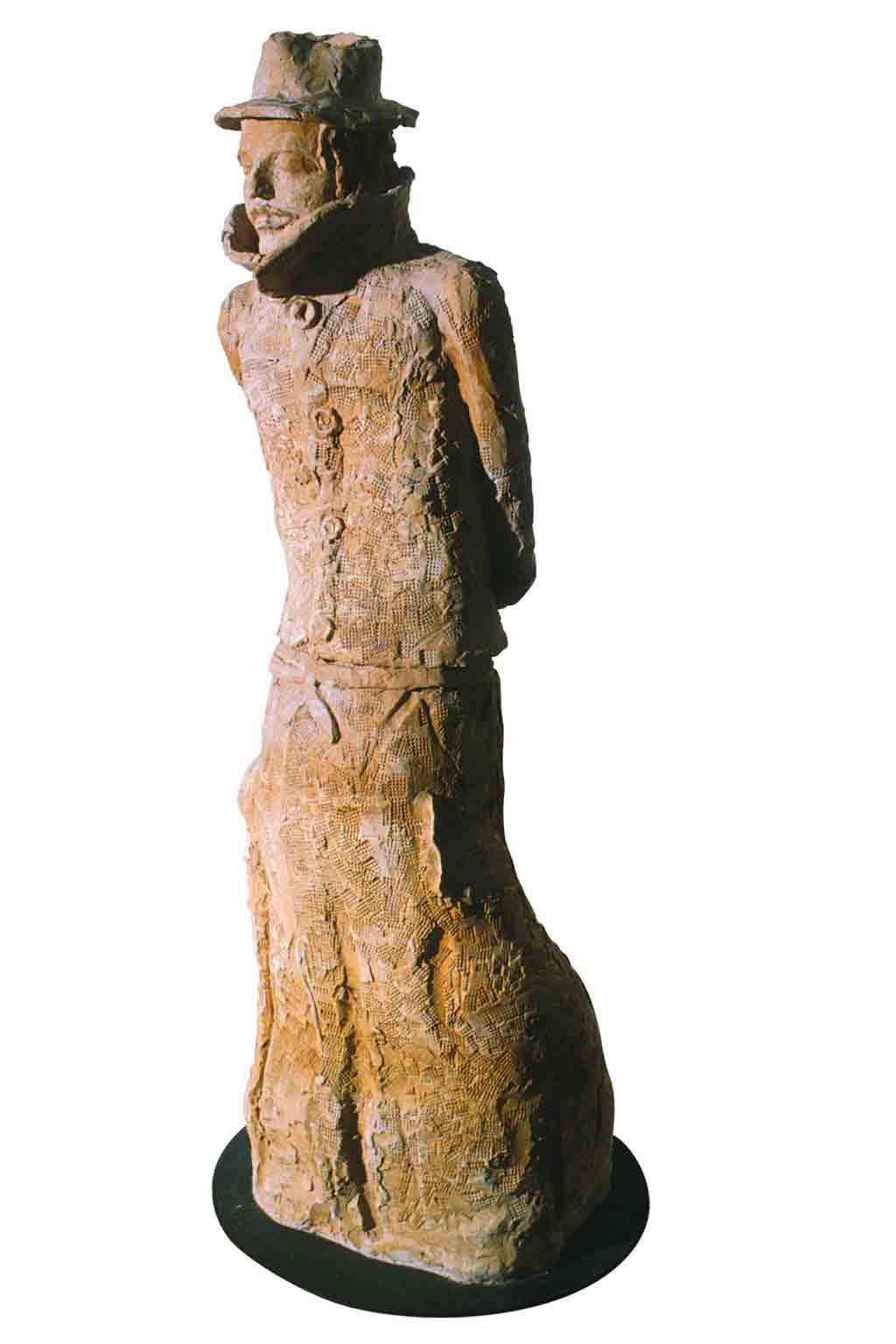Work: The man who imitates horses
Original sculpture

Original
- Author
- Felice Tagliaferri
- Date
- 2008
- Period
- Contemporary
- Dimensions
- 180 cm high, 80 cm wide, 80 cm deep
- Technique
- free hand modelling
- Material
- terracotta
- Space
- 20th Century and Contemporary
Photo: Maurizio Bolognini. Museo Tattile Statale Omero Archive.
Description
“The tactile aspect in sculpting and observation is a fundamental part of my artistic experience, so much so that tactile exploration of each of my works reveals details that cannot be perceived by the use of sight alone”, Felice Tagliaferri.
“The man who imitates horses” is a sculpture that Felice Tagliaferri, a blind artist, modelled in clay in 2008.
The statue, about 180 centimetres high, stands on a very thin circular base and portrays a life-size man, who has fallen asleep while standing up. He wears a hat with a round brim and a long, fitted coat, with a belt tied at his waist.
His body is entirely covered by the coat which flares to the hem and even hides his feet. The collar is turned up, covering his neck and part of his chin. His arms are thin and his hands are clasped behind his back. His face is broad, with thick pronounced lips and closed eyes. Flat strips of clay below the brim of his hat represent his hair, and reach the sides of his ears.
The man is asleep even though he is standing up, as horses are known to do; hence the title of the work.
Tagliaferri has deliberately left perceptible fingerprints and other signs of his hand-modelling on the surface of the work. These are accompanied by small areas of crossed grid-lines on the coat, representing the weave of the fabric.
If you explore the top of the hat, you will be able to feel the cavity created by the sculptor in order to fire the clay successfully.
The material feels more or less rough to the touch, depending on the level of finish that the sculptor has given to the various areas of the surface, which is mainly orange in colour, with lighter, greyer, areas.
For Felice Tagliaferri, sculpture is an art that can bring sighted and blind people together because its nature is so manual and tactile, right from the start of the process. Believing that sculpture should be accessible to everyone, Tagliaferri opened a school of plastic arts, “La Chiesa dell’Arte”, where he teaches anyone, sighted or blind, who would like to approach this discipline.
